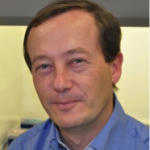Lien vers Pubmed [PMID] – 24102785
Clin. Microbiol. Infect. 2014 Apr;20 Suppl 3:76-98
The mortality associated with invasive fungal infections remains high with that involving rare yeast pathogens other than Candida being no exception. This is in part due to the severe underlying conditions typically predisposing patients to these healthcare-related infections (most often severe neutropenia in patients with haematological malignancies), and in part due to the often challenging intrinsic susceptibility pattern of the pathogens that potentially leads to delayed appropriate antifungal treatment. A panel of experts of the European Society of Clinical Microbiology and Infectious Diseases (ESCMID) Fungal Infection Study Group (EFISG) and the European Confederation of Medical Mycology (ECMM) undertook a data review and compiled guidelines for the diagnostic tests and procedures for detection and management of rare invasive yeast infections. The rare yeast pathogens were defined and limited to the following genera/species: Cryptococcus adeliensis, Cryptococcus albidus, Cryptococcus curvatus, Cryptococcus flavescens, Cryptococcus laurentii and Cryptococcus uniguttulatus (often published under the name Filobasidium uniguttulatum), Malassezia furfur, Malassezia globosa, Malassezia pachydermatis and Malassezia restricta, Pseudozyma spp., Rhodotorula glutinis, Rhodotorula minuta and Rhodotorula mucilaginosa, Sporobolomyces spp., Trichosporon asahii, Trichosporon asteroides, Trichosporon dermatis, Trichosporon inkin, Trichosporon jirovecii, Trichosporon loubieri, Trichosporon mucoides and Trichosporon mycotoxinivorans and ascomycetous ones: Geotrichum candidum, Kodamaea ohmeri, Saccharomyces cerevisiae (incl. S. boulardii) and Saprochaete capitatae (Magnusiomyces (Blastoschizomyces) capitatus formerly named Trichosporon capitatum or Geotrichum (Dipodascus) capitatum) and Saprochaete clavata. Recommendations about the microbiological investigation and detection of invasive infection were made and current knowledge on the most appropriate antifungal and supportive treatment was reviewed. In addition, remarks about antifungal susceptibility testing were made.

